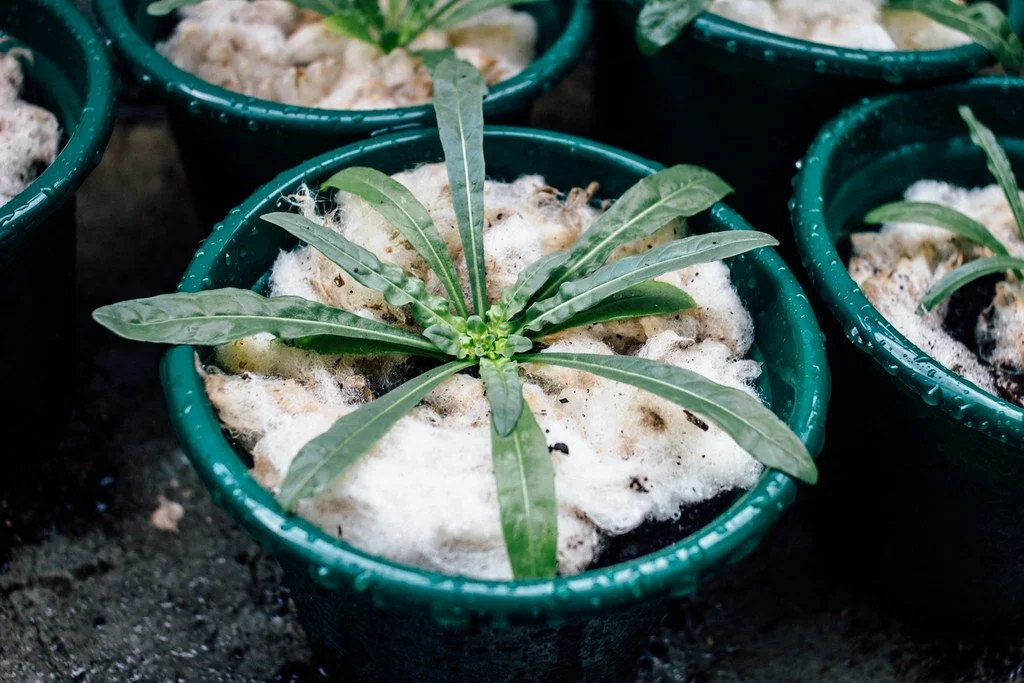Using wool as mulch
The woad plants I cultivated at Quinta BioHabitus in 2018/2019.
A baby Murasaki (Lithospermum erythrorhizon) snuggled up with wool;
Here we have a Rubia tinctorum in a pot covered with wool, which greatly reduces the frequency of watering;
This Weld plant is surrounded by wool, but also by the flax chaff left over after the harvest: another excellent mulching material!
I've been asked several times why I have wool around my plants after showing some of the photos of our dye Plants. I often use wool in soil and pots, yes.
One of the most useful uses for the wool that, for various reasons, isn't good enough to process is to use it for mulching.
That's what I do with the wool I no longer want to keep in my archive of Portuguese wool, which I partially renew every year. I don't throw the wool away, it simply goes into the garden, vegetable patch and pots to finish its cycle.
Advantages of using wool as a ground cover:
- It preserves the moisture in the soil and you end up having to water much less. I really noticed this with the wool in the pots. The soil in the pots tends to dry out more and the waterings in the pots with wool were much more spaced out. The wool absorbs the water in the fibers and releases it more slowly into the soil.
- It blocks out weeds, of course. That's the main purpose of ground cover and it doesn't fail here.
- It controls the temperature of the ground. Just as it does when we wear it, wool also regulates the temperature of the soil. We've already seen that it conserves moisture, but on colder days it keeps the soil warmer, which can protect some crops from frost, for example.
- If you have easy access to raw wool (the result of shearing without further processing), simply spread it around the plants. You don't need to do anything else. However, to understand the relevance of wool as mulch and the possibility of this being a viable commercial product, please be aware that there are rolls of wool produced for this purpose on the market.
- It decomposes slowly, releasing organic matter into the soil. The truth is that plants that grow surrounded by wool always look great. I don't know if it's just that it keeps the humidity up or if it fertilizes the plants too. The wool releases nitrogen into the soil and if it's raw wool, we have all that extra organic material that gets incorporated into the soil.
- It's biodegradable, natural and renewable. Using plastics or woven fabrics (which are synthetic anyway) as ground cover is still very common and the problem of microplastics and their incorporation into the soil is nothing new, so looking at more organic solutions is not a bad idea.
- I've seen it mentioned several times that it prevents snails and slugs from reaching the plants, because it's difficult to crawl over the wool. Only advantages!







